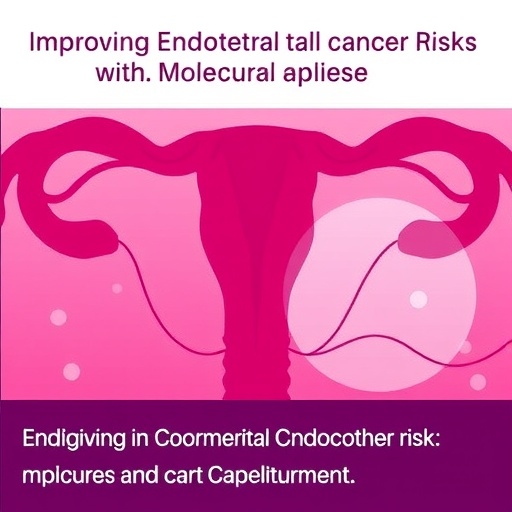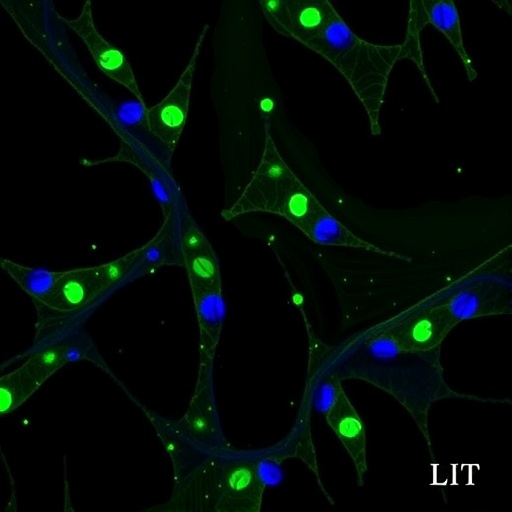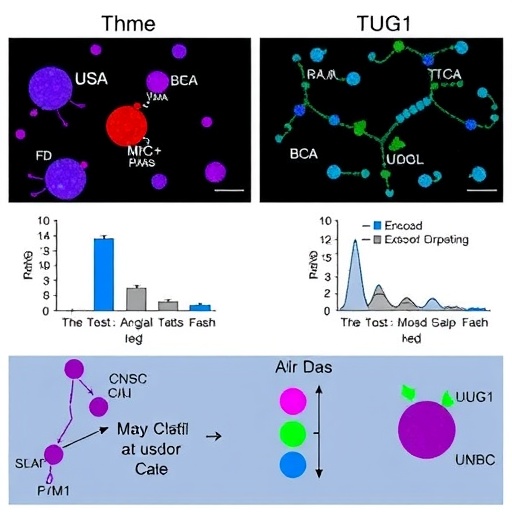
Advancements in Endometrial Cancer Risk Assessment: The Transformative Role of Molecular Classification
Endometrial cancer remains one of the most common gynecologic malignancies worldwide, necessitating precise risk stratification to guide individualized treatment planning. A recent investigation, published in BMC Cancer, critically evaluates the integration of molecular classification into preoperative risk assessment protocols, as outlined in the 2021 ESGO/ESTRO/ESP guidelines. Through meticulous analysis, this study reveals a marked enhancement in the accuracy of preoperative risk predictions, signaling a potential paradigm shift in managing endometrial cancer.
Traditionally, endometrial cancer risk stratification has relied heavily on clinical staging supported by imaging modalities, primarily transvaginal ultrasound. While effective to a degree, these approaches possess inherent limitations in accurately delineating the tumor’s biological behavior and consequent prognosis. The ESGO/ESTRO/ESP 2021 guidelines introduced a comprehensive framework that integrates molecular markers into conventional diagnostic pathways, proposing a more refined stratification model. This study represents one of the first to rigorously test the practical impact of such integration on preoperative decision-making.
.adsslot_tQDX7Zc1Ca{width:728px !important;height:90px !important;}
@media(max-width:1199px){ .adsslot_tQDX7Zc1Ca{width:468px !important;height:60px !important;}
}
@media(max-width:767px){ .adsslot_tQDX7Zc1Ca{width:320px !important;height:50px !important;}
}
ADVERTISEMENT
The investigators conducted a retrospective cohort analysis involving 143 patients diagnosed with endometrial cancer. These patients underwent a standard preoperative workup inclusive of clinical imaging. The innovative aspect of this research was the implementation of molecular classification—a method that categorizes tumors based on genomic and proteomic profiles. The core question addressed was whether molecular data could augment the predictive capability of preoperative staging, thereby aligning clinical plans more closely with postoperative therapeutic needs.
Molecular classification techniques have revolutionized oncologic diagnostics across multiple cancer types, offering insights into tumor heterogeneity and risk stratification. In endometrial cancer, specific molecular alterations, such as mutations in POLE, p53 status, and mismatch repair deficiency, harbor profound prognostic significance. By embedding these molecular signatures into preoperative evaluation, clinicians can potentially unmask aggressive disease phenotypes that imaging alone might underestimate.
The study leveraged weighted Cohen’s Kappa statistics to quantify concordance between preoperative risk group assignments and definitive postoperative pathology results. This statistical approach accounts for chance agreement and offers a nuanced understanding of classification accuracy. With the addition of molecular classification, the overall agreement improved notably, with Kappa values rising from 0.551 to 0.767. This enhancement underscores the robustness of molecular markers in refining endometrial cancer risk assessment.
Remarkably, the incorporation of molecular data increased the accuracy of preoperative risk stratification from 59.4% to 73.4%. This uplift was particularly pronounced among patients who ultimately demonstrated high-risk features post-surgery—a cohort historically prone to underestimation in preoperative evaluation. The findings suggest molecular classification acts as a critical adjunct, enabling the identification of patients who might benefit from more aggressive surgical or adjuvant therapeutic strategies.
Despite these advances, the study acknowledges residual challenges. Approximately 26.6% of patients remained misclassified even after molecular evaluation. These discrepancies were predominantly localized within intermediate and high-intermediate risk groups, populations characterized by borderline features and overlapping clinical-pathological presentations. This highlights the persistent complexity of endometrial cancer biology and the necessity for multifactorial assessment strategies.
The practical implications of enhanced preoperative risk stratification extend beyond prognosis. Accurate risk categorization informs surgical planning—dictating the extent of lymphadenectomy, the necessity for radical hysterectomy, and potential lymph node sampling. It also shapes adjuvant treatment regimens, including radiotherapy and chemotherapy, with the goal of optimizing therapeutic efficacy while minimizing morbidity.
Importantly, the study’s reliance on transvaginal ultrasound as the primary imaging modality reflects real-world clinical practice and underscores the feasibility of integrating molecular techniques into existing workflows. However, the retrospective design and single-center data necessitate cautious interpretation. Prospective, multicentric validation remains essential to corroborate the generalizability and reproducibility of these promising findings across diverse patient populations.
The molecular classification approach aligns well with the trend toward precision oncology, wherein treatment paradigms are tailored to the tumor’s genetic landscape rather than relying solely on anatomical and histopathological criteria. In endometrial cancer, this could facilitate early identification of aggressive disease, preempting undertreatment and improving survival outcomes.
From a research perspective, the integration of ESGO/ESTRO/ESP guideline-based molecular classification presents a fertile ground for further scientific inquiry. Future studies could explore synergistic combinations of imaging biomarkers, molecular profiles, and clinical parameters to develop composite predictive models. Moreover, the advent of next-generation sequencing and liquid biopsy technologies may soon enable noninvasive, real-time molecular characterization of tumors.
This research ultimately accentuates that molecular classification is not simply an ancillary tool but a cornerstone of modern endometrial cancer management. The demonstrated improvements in classification accuracy herald a new era in which precision risk stratification facilitates personalized surgical decision-making, potentially reducing overtreatment and sparing patients from unnecessary procedures.
In conclusion, integrating molecular profiling into the preoperative evaluation of endometrial cancer represents a substantial advance with tangible clinical benefits. By enhancing the predictive fidelity of risk stratification, molecular classification refines patient selection for tailored treatment pathways, offering hope for improved prognosis and quality of life. The path forward demands continued collaborative efforts to validate these findings, ensuring they can be seamlessly embedded into routine gynecologic oncology practice worldwide.
Subject of Research:
The study investigates the impact of incorporating molecular classification into preoperative risk stratification for patients with endometrial cancer, in accordance with the 2021 ESGO/ESTRO/ESP guidelines.
Article Title:
Preoperative risk stratification in endometrial cancer using ESGO/ESTRO/ESP 2021 guidelines: accuracy with and without molecular classification
Article References:
Bretová, P., Ndukwe, M.I., Laco, J. et al. Preoperative risk stratification in endometrial cancer using ESGO/ESTRO/ESP 2021 guidelines: accuracy with and without molecular classification. BMC Cancer 25, 1302 (2025). https://doi.org/10.1186/s12885-025-14741-5
Image Credits:
Scienmag.com
DOI:
https://doi.org/10.1186/s12885-025-14741-5
Tags: advancements in cancer diagnosticscancer prognosis evaluationendometrial cancer risk assessmentESGO ESTRO ESP guidelinesgynecologic malignancies treatmentindividualized treatment planningintegrating molecular markers in medicinemolecular classification in cancerpreoperative risk predictionretrospective cohort analysis in oncologyrisk stratification methodstumor biological behavior





